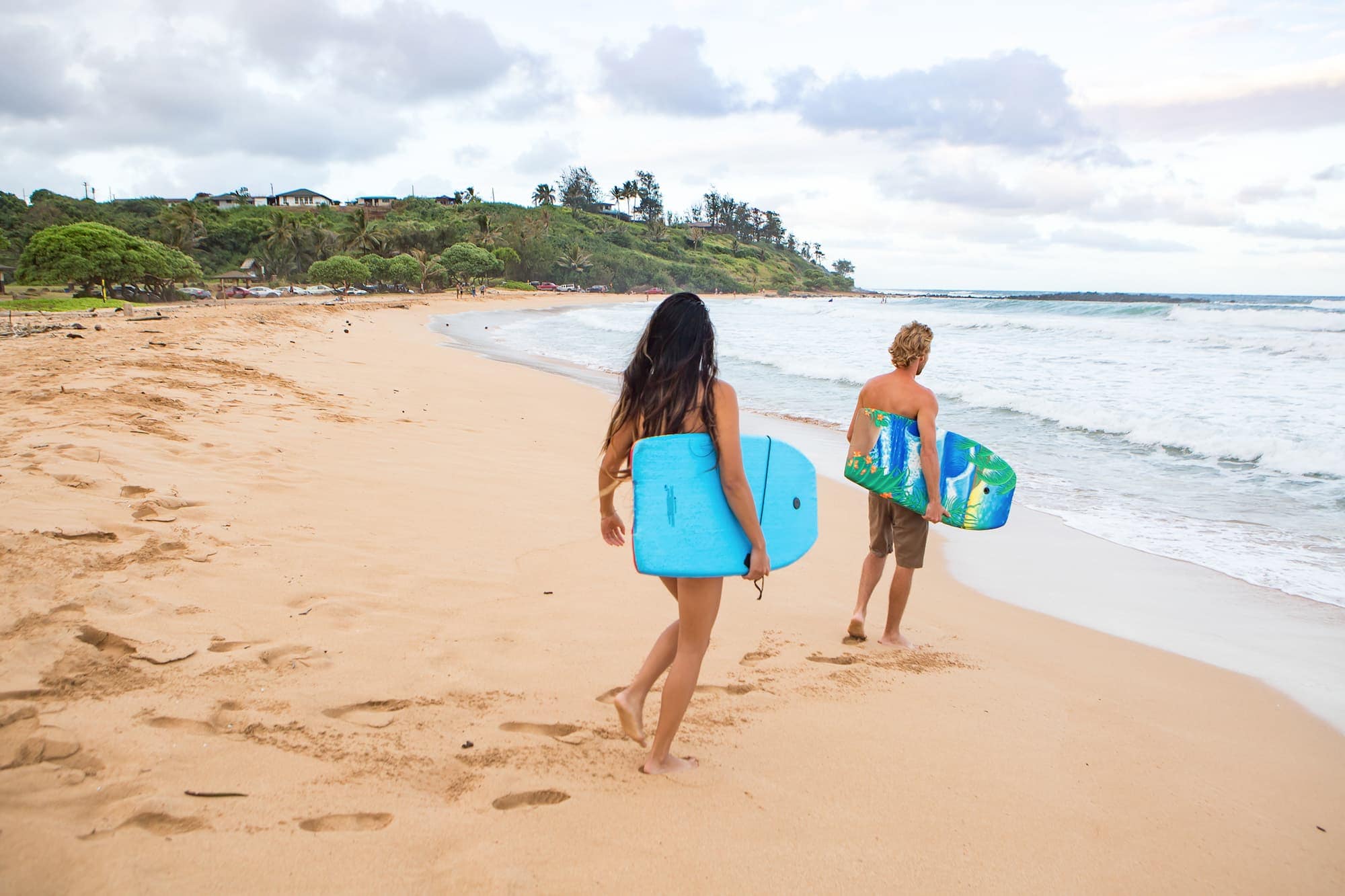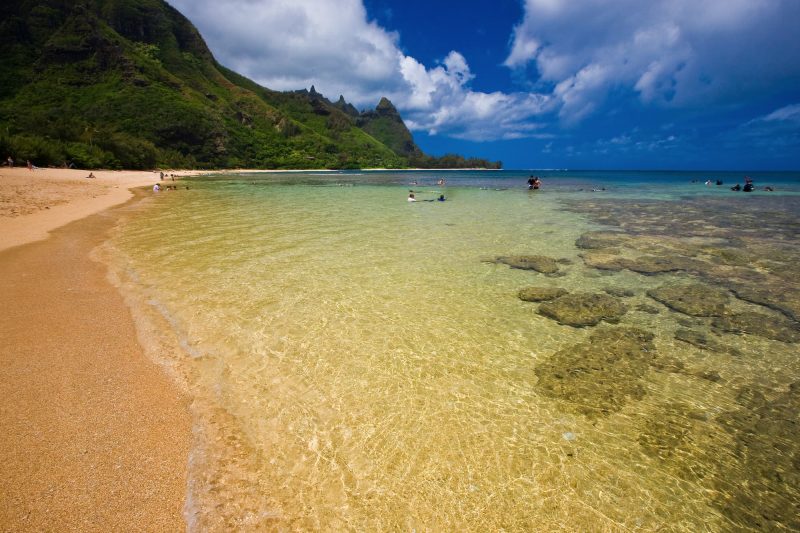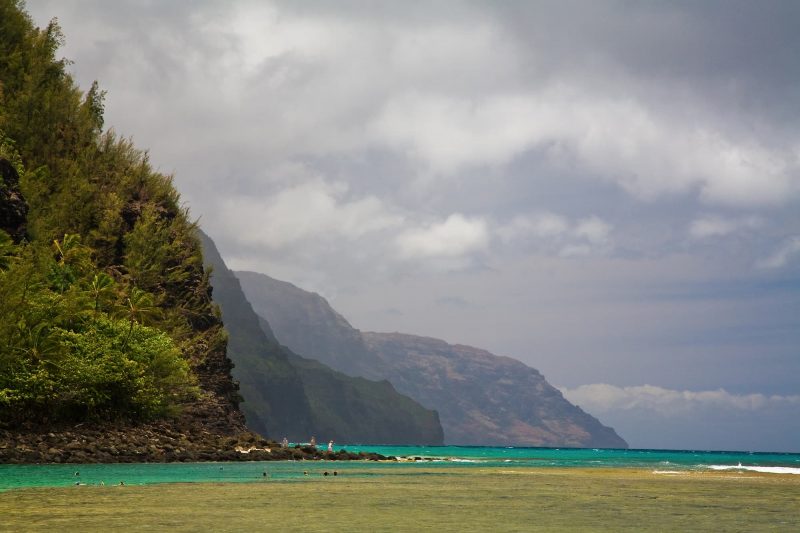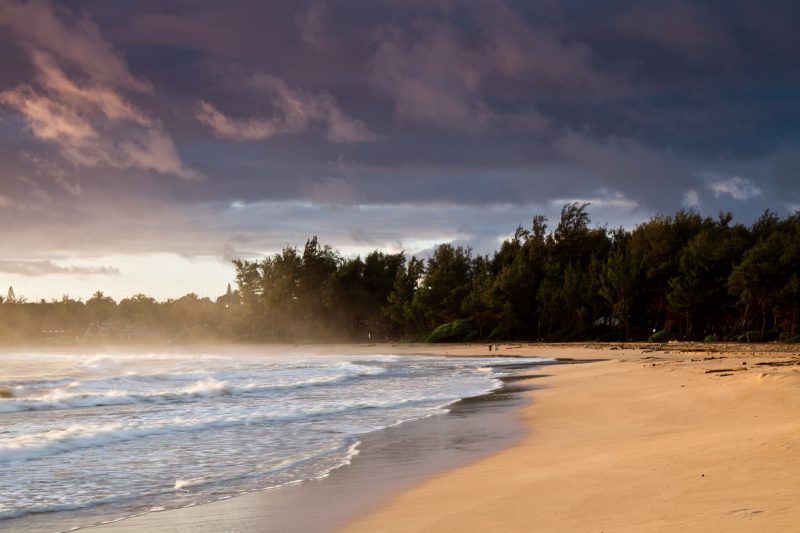Kauaʻi, aka “The Garden Island,” is known for its rural, scenic beauty and relaxed, less-populated atmosphere – two qualities that we think certainly bode well for a beach day.
While many of Kauaʻi’s beaches experience rough seas, especially in winter, there are more than enough that offer safe, lifeguarded swimming and calm conditions. Many of Kauaʻi’s beaches remain wild annd provide opportunities for snorkeling, scuba diving, and surfing, some requiring a short, adventurous hike.
Overall, while Kauaʻi doesn’t have the quality or quantity of beaches found on Oʻahu and Maui, there are still numerous options for every kind of beach goer, from families with small children to beach bums and active adults.
Table of contents
- Favorite beaches for… (families, snorkeling, surfing, etc.)
- Beach map
- North Kauai beaches
- South Kauai beaches
- East Kauai beaches
- West Kauai beaches
Table of Contents
- Favorite beaches for… (families, snorkeling, surfing, etc.)
- Beach map
- North Kauai beaches
- South Kauai beaches
- East Kauai beaches
- West Kauai beaches
Our favorite beaches for …
What’s the best beach for you? It depends on what you’re looking for. With so many beaches to choose from, options are aplenty. But, here are answers to some commonly asked questions.
Poʻipū and Lydgate Beach Park are great for families because they have the safest swimming areas for small children.
Intermediate and advanced snorkelers will like the beaches along the north shore, like Tunnels and Keʻe Beach. Beginners should head to Lydgate Beach Park, where a protected lagoon is home to tropical fish. See also our Kauaʻi snorkeling guide for more information.
If you’re looking for peace and quiet, head to the string of beaches out west, where it’s less developed: Kekaha, Barking Sands, and Polihale strip.
Try Brennecke’s Beach for body boarding due to its consistent shore break.
See our list of water activities for Kauaʻi for more related beach (and ocean) fun.
Staying safe on the beach
Here are some tips about going to the beach in Hawaiʻi. Some may be common sense, but it’s important to share them here. The ocean can be unpredictable and dangerous at times. Even when conditions make it seem like paradise, you should keep the following in mind:
- Never turn your back to the ocean (waves) when on shore or in the water.
- Swim with a buddy and/or at a lifeguarded beach.
- Don’t leave valuables unguarded on the beach or visible in your car – only pack what’s necessary.
- Bring reef-safe sunscreen and sun cover, like hats and rash guards. The sun is strong here, even on cloudy days. (This is a mistake locals and tourists make alike here in Hawaiʻi)
- When in doubt, don’t go out. Check with lifeguards about swimming conditions before entering the water.
Beach map
Here is a general overview of Kauaʻi’s beaches in an interactive map to help you get the lay of the land:
North Kauaʻi
North Kauaʻi is the gateway to the Nāpali Coast, with many of its beaches backdropped by beautiful cliffs and green mountainsides.
Hanalei Beach
Why Go: Hanalei is the main hub on the North Shore, and this crescent-shaped beach is a wonderful introduction to the beauty its coastline has to offer. Walking distance from town, the beach has soft white sand and some of the best views of any beach on the island, featuring the dramatic, sheer cliffs in the distance and waterfalls coming down the mountainside. There’s a lifeguard on duty, and conditions are typically swimmable, generally calm and safe for families with children.
Added Bonus: Hanalei is an excellent place to learn to surf, arguably the best on the island. Waves are generally beginner friendly, and there are several surf schools within the town of Hanalei.
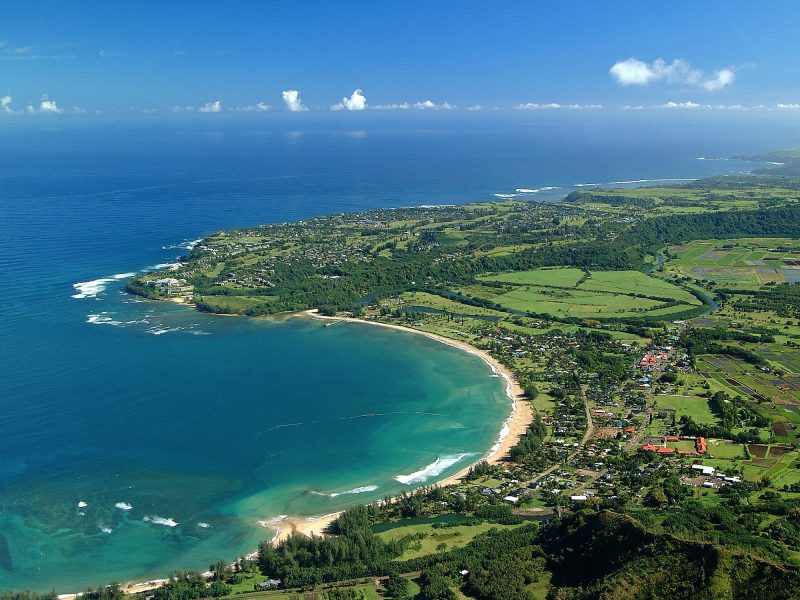
Hanalei Bay is a gorgeous crescent bay ringed by a sandy beach. Credit: Hawaii Tourism Authority (HTA) / Ron Garnett
Kauapea Beach (Secret Beach)
Why Go: Also known as “Secret Beach,” reaching this slice of sand requires a 10-minute walk down a semi-steep, unimproved trail (and, of course, a semi-steep climb back up). It’s doable for most people, but not ideal for families with lots of gear or anyone with mobility issues. The beach itself is soft golden sand with rock outcroppings and a wonderful view of the Kīlauea Lighthouse, though swimming here can be very dangerous due to strong currents.
Added Bonus: There’s no resort development around Kauapea, which has kept it very serene and natural.
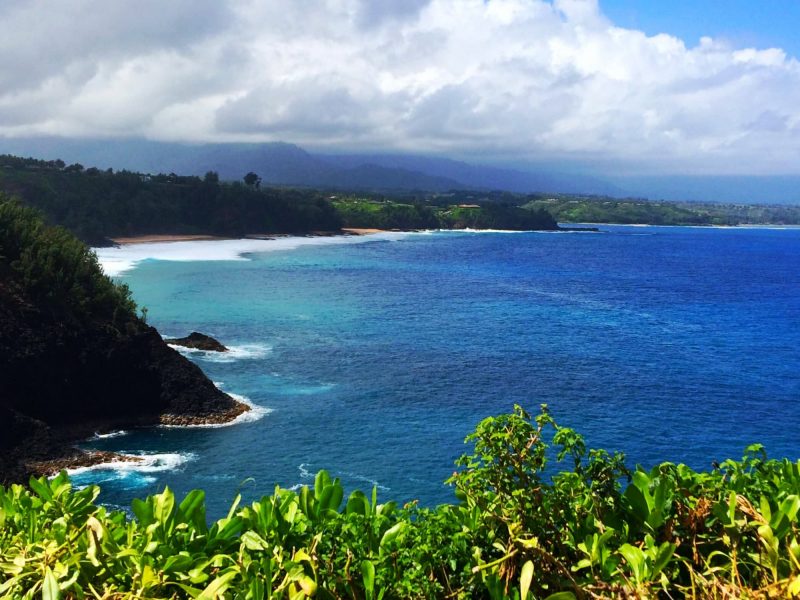
Kauapea beach from the Kilauea lighthouse. Image credit: Suzanne Neubauer, source.
Tunnels Beach
Why Go: There’s golden sand and mountain views, but the draw here is water sports. It’s a favorite surfing spot for intermediate and advanced surfers, as well as kite and wind surfers. When conditions are calm, the snorkeling and scuba diving here is excellent thanks to large, healthy reefs and underwater caverns just offshore. Though the beach faces north, sunsets here are great due to the line of sight west, where the sun goes down over or adjacent to the mountains of the Nāpali Coast.
Added Bonus: The name “Tunnels” comes from the submerged lava tubes that form underwater caverns – which snorkelers, scuba divers, and free divers love to explore.
Hāʻena Beach State Park/Keʻe Beach
Why Go: In the summer, when the water is calm, Hāʻena Beach State Park is a great family-friend, golden-sand string of beaches with typically calm conditions, mountain and jungle views, lifeguards, restrooms, dry and wet caves, and other various activities, like beach combing and shell collecting. In the winter, when the surf is rough, you’ll want to stay on shore and watch the expert surfers do their thing. The Park is the gateway to the Kalalau Trail along the Nāpali Coast, which is one of the most spectacular hikes in all of Hawaiʻi.
Added Bonus: When in the state park, check out the nearby taro fields, which grows in wet ponds (similar to rice). Taro, or kalo, was the staple of the ancient Hawaiian diet.
The North Shore shuttle: Access to this beach is easiest with the North Shore shuttle. The parking lot/shuttle drop-off point is a 0.4 miles walk to Kē’ē Beach.
South Kauaʻi
South Kauaʻi offers some of the island’s most favorable swimming conditions.
Poʻipū Beach
Why Go: If you’re looking for a family-friendly beach that’s safe for small children, Poʻipū is the place. Protected by offshore rocks and reefs, the water along the shore is usually extremely calm, akin to a wading pool. Snorkeling is also possible offshore. This beach gets very crowded on the weekends for picnics and birthday parties.
Added Bonus: Poʻipū is also a favorite napping site of the Hawaiian monk seal.
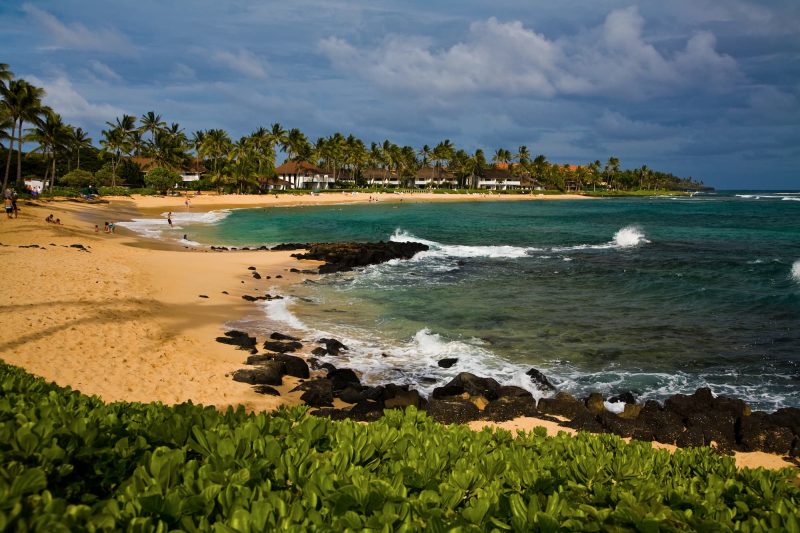
Poipu is a popular beach with a shallow, protected swimming area, snorkel & surfboard rentals & a playground. Image: Hawaii Tourism Authority (HTA) / Tor Johnson
Brennecke’s Beach
Why Go: Adjacent to Poʻipū Beach, Brennecke’s is like its wild little brother. Though it offers the same scenery, its waters have more waves, much to the delight of bodyboarders and wave riders.
Added Bonus: A restaurant by the same name nearby the beach offers local seafood for lunch and dinner.
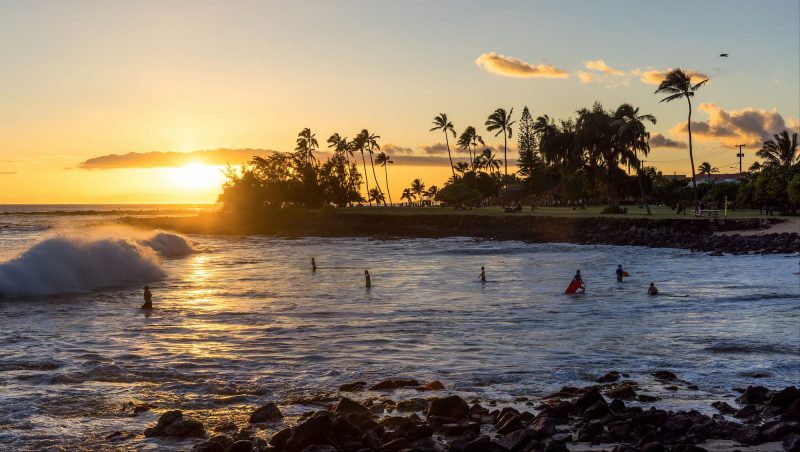
Sunset at Brennecke’s beach. Image credit: Suzanne Neubauer, source.
Shipwreck’s Beach
Why Go: Shipwreck’s Beach gets pounded with surf, making it popular for surfers. It’s not a great place to swim, but it’s a wonderful spot to catch the sunset, sunbathe, and people watch.
Added Bonus: Shipwreck Beach is the start of the Mahaulepu Heritage Trail, a meandering coastal hiking path that blends scenic beauty and ocean views with historical and cultural points of interest.
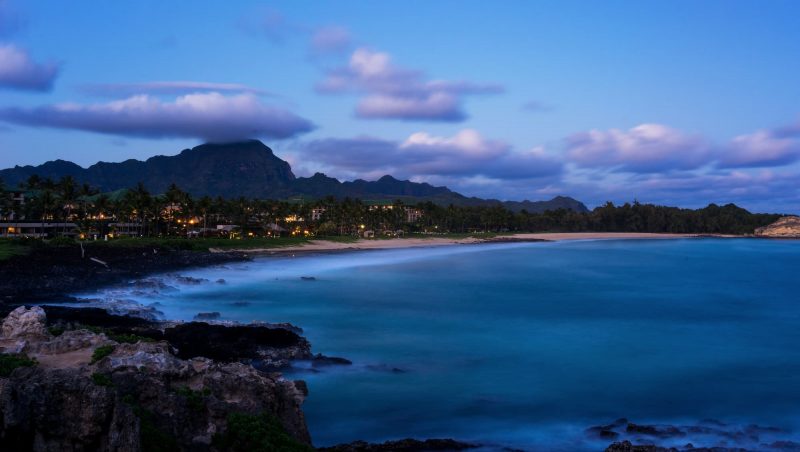
Fronted by a few resorts, Shipwreck’s Beach is a long stretch of golden sand on the eastern end of Poipu. Image credit: Suzanne Neubauer, source.
Gillin’s Beach
Why Go: Gillin’s Beach is part of the Mahaulepu Beach area. It’s more isolated than its neighbors in Poʻipū, located on an undeveloped coastline (part of the Mahaulepu Heritage Trail) and offering a more natural setting, with many cliffs, coves, and lava tubes. The water is usually a bit rough for swimming, although quick dips are possible. Most people find their way here for the serenity, or to walk around and explore the coastline.
Added Bonus: Behind Gillin’s Beach is the Makauwahi Cave Preserve, the largest limestone cave in Hawaiʻi. Considering taking a tour to learn about its cultural history.
East Kauai
The east side of Kauai is loaded with options for families and beach bums alike.
Kalapaki Beach
Why Go: Kalapaki is located in Līhuʻe, adjacent to the Nāwilili Harbor. It has soft, golden sand, mellow surf, and a gentle-sloping entrance into the water, making it a great place to swim and lounge. It is typically on the busy side due to the presence of nearby resorts, and you can catch cruise ships coming in and out of the harbor.
Added Bonus: A string of shops and restaurants is located just behind the beach, including Duke’s.
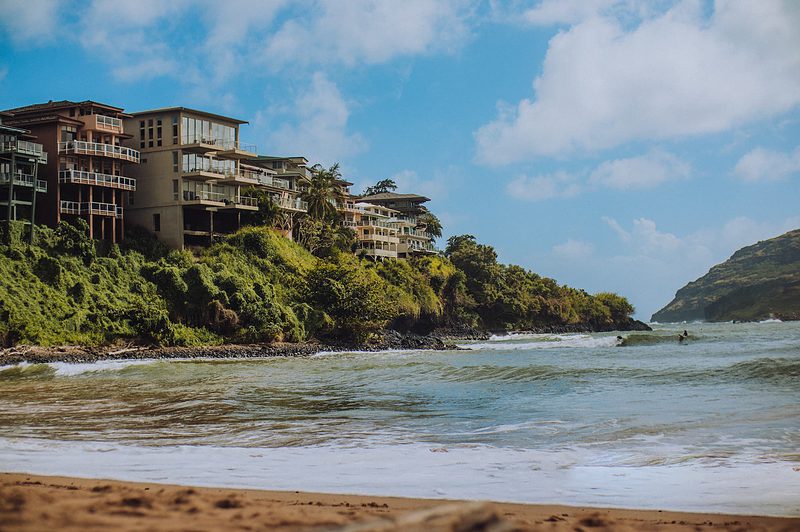
Located just outside downtown Lihue, Kalapaki Beach offers a convenient place to swim and sunbathe in the city. Photo by Zane Persaud on Unsplash
Lydgate Beach Park
Why Go: If you have small children that want to play in the water all day, this is a great place for families. Stone walls form two enclosures that protect against the incoming waves and current, forming “ponds” that are safe for young swimmers. Outside the walls, the area is popular with local fisherman, campers, surfers, and divers as well.
Added Bonus: A variety of tropical fish can be found in the protected “ponds,” making it an ideal location for beginner snorkelers.
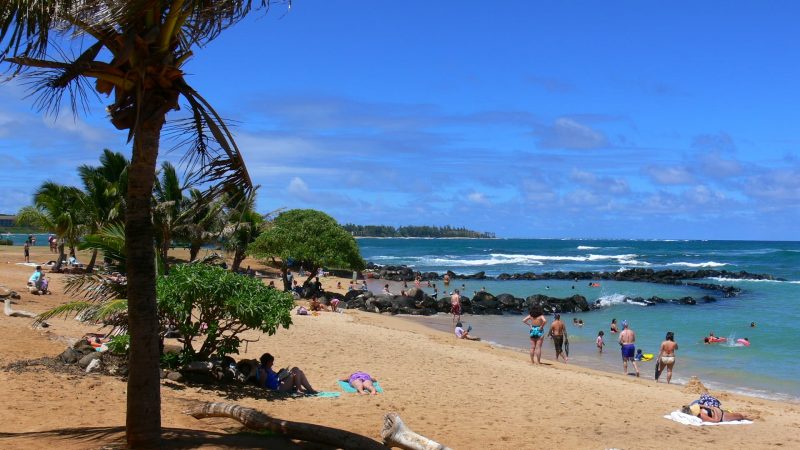
Lydgate is a fun, family-oriented beach with a lifeguard tower overlooking boulder-enclosed pools. Image credit: Jim Mullhaupt, source.
Wailua Beach Park
Why Go: Wailua Beach is located just south of Kapaʻa and known for its surfing. It’s a place for experienced surfers only, as currents can be strong.
Added Bonus: The beach is located at the mouth of the Wailua River, the only navigable river in Hawaiʻi. Upriver, you can find opportunities to kayak and explore waterfalls, like Opaekaʻa Falls.
Kapaʻa Beach Park/Fuji Beach
Why Go: A canal runs between Kapaʻa Beach Park and Fuji Beach, separating them into two experiences. While the former is good for fishing or a stroll, the latter has a rock wall protecting the shore from the waves, creating small tide pools where it’s safe to swim.
Added Bonus: There’s a paved beach path, the Kauaʻi Coastal Path, that runs the length of Kapaʻa, great for a scenic bike ride or oceanside exercise. You can hop on it here at Fuji and Kapaʻa Beach Park.
Keālia Beach Park
Why Go: Keālia offers a little bit of everything – wide with golden sand, a surf break, picnic areas, lifeguards, and a rock outcropping that creates a calm swimming area (north end). It’s a great place for whale watching during the winter.
Added Bonus: This beach is also located along the Kauaʻi Coastal Path. Consider biking the path between Keālia and Kapaʻa Beach Park (2.5 miles).
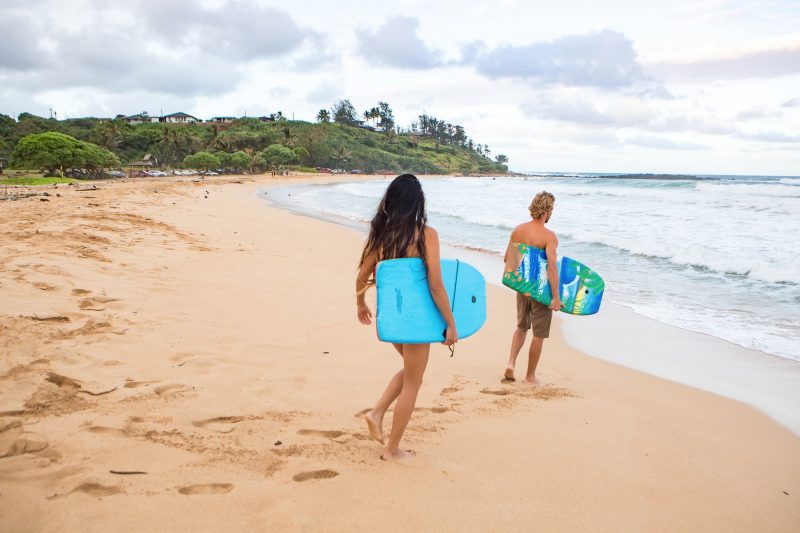
Kealia’s long stretch of white sand beach is great for beach walks and whale watching during the winter months. Credit: Hawaii Tourism Authority (HTA)
Anahola Beach
Why Go: Mountain views, snorkeling, typically calm conditions, and off-the-highway seclusion make Anahola a popular northeast hangout for locals and visitors alike. There is also good snorkeling at the shallow reefs off shore.
Added Bonus: Half-moon in shape, Anahola is a great beach for walking due to its variety of views and length.
West Kauaʻi
There aren’t many beaches on the rugged west coast of Kauaʻi, but there are some beauties.
Polihale State Park
Why Go: Polihale is the most wild and natural beach on the island, with striking views of the cliffs along the Nāpali Coast and bold blue water. It’s located about as out of the way as one can be on Kauaʻi, at the very end of the road out west, accessed by an unimproved, sandy dirt road (some rental car companies don’t permit their vehicles to be taken here). Walk down the beach, away from the cliffs, and you’re sure to find your own slice of sand. No lifeguard is on duty and currents can be strong, so take caution.
Added Bonus: Camping is available (by permit) at Polihale. It’s a great way to experience this undeveloped area of Kauaʻi and avoid a long day trip.
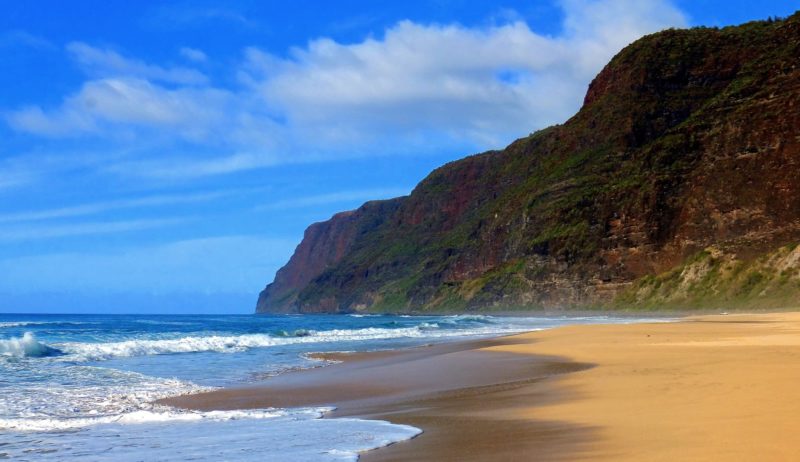
Polihale State Park is a remote wild beach and a great choice for those people seeking isolation. Image credit: K E V I N, source.
Kekaha
Why Go: With offshore views of Niʻihau and Lehua Rock, Kekaha is a great place to watch the sunset. However, the water here is usually rough, and runoff can leave it brown, so if you have your heart set on swimming, this isn’t your place. Our recommendation is to walk west along the wide beach and find a secluded place for a sunset picnic.
Added Bonus: The beach goes uninterrupted from Kekaha to Polihale, making it the longest strip of continuous sand in the state. The area between is known as Barking Sands for the sound it makes when walking upon it. There are several legends attached to the sound, including one about an old fisherman and his dogs.
More beaches?
Beaches on Kauaʻi are gorgeous, but ask any resident and they will tell you the beaches here are “mwah” and that you should go to Maui or Oʻahu to enjoy the beach. Ignore those people! All our beaches are unique, and we promise you that you will also find paradise-like beaches on Kauaʻi or the Big Island.
Have a look at our other beach guides to get to know our favorite beaches in Hawaiʻi:
